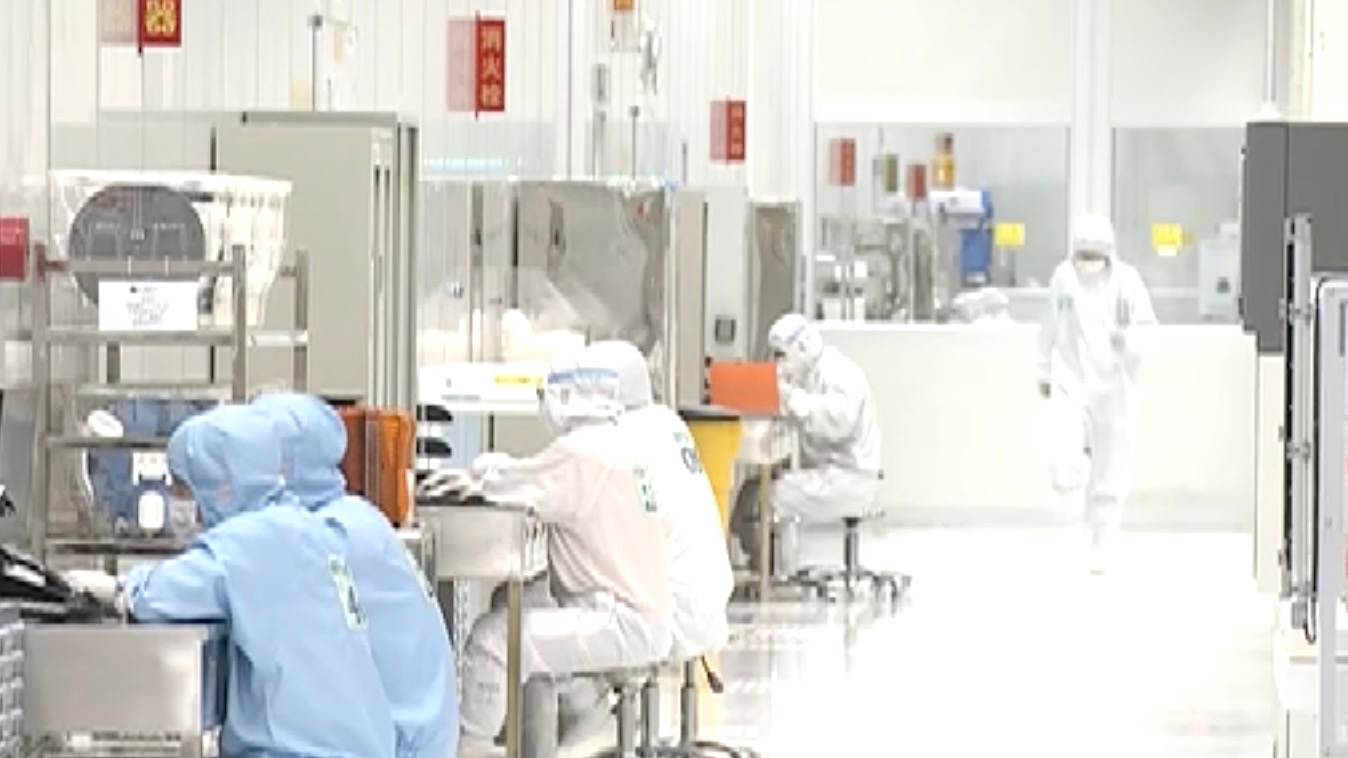
The scale of Shanghai's integrated circuit industry reached 170.656 billion yuan ($26.81 billion) in 2019, with a year-on-year increase of 17.65 percent, accounting for about one-fifth of the country's total. /CFP
The scale of Shanghai's integrated circuit industry reached 170.656 billion yuan ($26.81 billion) in 2019, with a year-on-year increase of 17.65 percent, accounting for about one-fifth of the country's total. /CFP
Chipmakers in China's metropolis Shanghai are remaining operational to ensure normal outputs despite a temporary lockdown due to a COVID-19 outbreak since March 28, when the city began to witness a rising number of Omicron infections.
To protect the local semiconductor supply chain from disruptions, the municipal government of Shanghai has allowed chip manufacturers to operate under a "closed-loop" system.
Base of semiconductor enterprises
Shanghai is home to numerous major semiconductor enterprises in areas such as Lingang, Zhangjiang, Caohejing, Songjiang, Minhang Zizhu and other large chip industrial zones.
The scale of Shanghai's integrated circuit industry reached 170.656 billion yuan ($26.81 billion) in 2019, with a year-on-year increase of 17.65 percent, accounting for about one-fifth of the country's total.
According to a governmental plan, the sales scale of the whole industry chain of Shanghai's Pudong integrated circuits will reach 400 billion yuan ($62.84 billion) by 2025.

According to a governmental plan, the sales scale of the whole industry chain of Shanghai's Pudong integrated circuits will reach 400 billion yuan ($62.84 billion) by 2025. /CMG
According to a governmental plan, the sales scale of the whole industry chain of Shanghai's Pudong integrated circuits will reach 400 billion yuan ($62.84 billion) by 2025. /CMG
Efforts to curb COVID-19
China's second largest chip producer, Hua Hong Semiconductor, which operates China's first 8-inch foundry production line, has accommodated more than 6,000 workers spread across five factories in Shanghai since March 27.
Hallways and corridors had been converted into sleeping quarters, and temporary shower stalls have been installed in the restrooms.
Wang Lijing, a Hua Hong worker, said he's been staying in the factory for the past two weeks. "While we've automated many parts of our operations, it is necessary to have people monitor the process."
A Hua Hong factory manager said they were trying to ensure chip production and deliveries.
"Chip supply remains tight worldwide. As the most important part of it, we must ensure continuous production (of chips) so that all kinds of downstream products can have the chips they need," said Wei Zhengying, a factory manager at Hua Hong Semiconductor.

Hallways and corridors of the Hua Hong Semiconductor office building have been converted into sleeping quarters. /CMG
Hallways and corridors of the Hua Hong Semiconductor office building have been converted into sleeping quarters. /CMG
Insights of experts
Industrial insiders said the COVID-19 situation in Shanghai is still grim, but chip factories in Shanghai and Kunshan area had all been operating normally for the past 10 days.
Thanks to adequate preparations, the chipmakers' revenue forecasts for the first quarter won't be seriously impacted by the lockdown.
For the semiconductor plant, though the epidemic effects are under control, the logistics services are unstable, insiders added, as raw materials including silicon, chemicals and special gas largely depend on previous inventory.
Semi-finished products and product shipment are both quite unstable, if the lockdown continues for months, the semiconductor wafer foundry and sealing test factory will have to significantly reduce workload because of a lack of raw materials.
Nonetheless, companies in the industry may make up for any losses by getting urgent orders which require extra working hours.
In February, the U.S.-based Semiconductor Industry Association announced that global chip sales hit a record high of $555.9 billion in 2021, and are expected to grow by 8.8 percent this year as chipmakers ramp up production capacity to satisfy demand.

